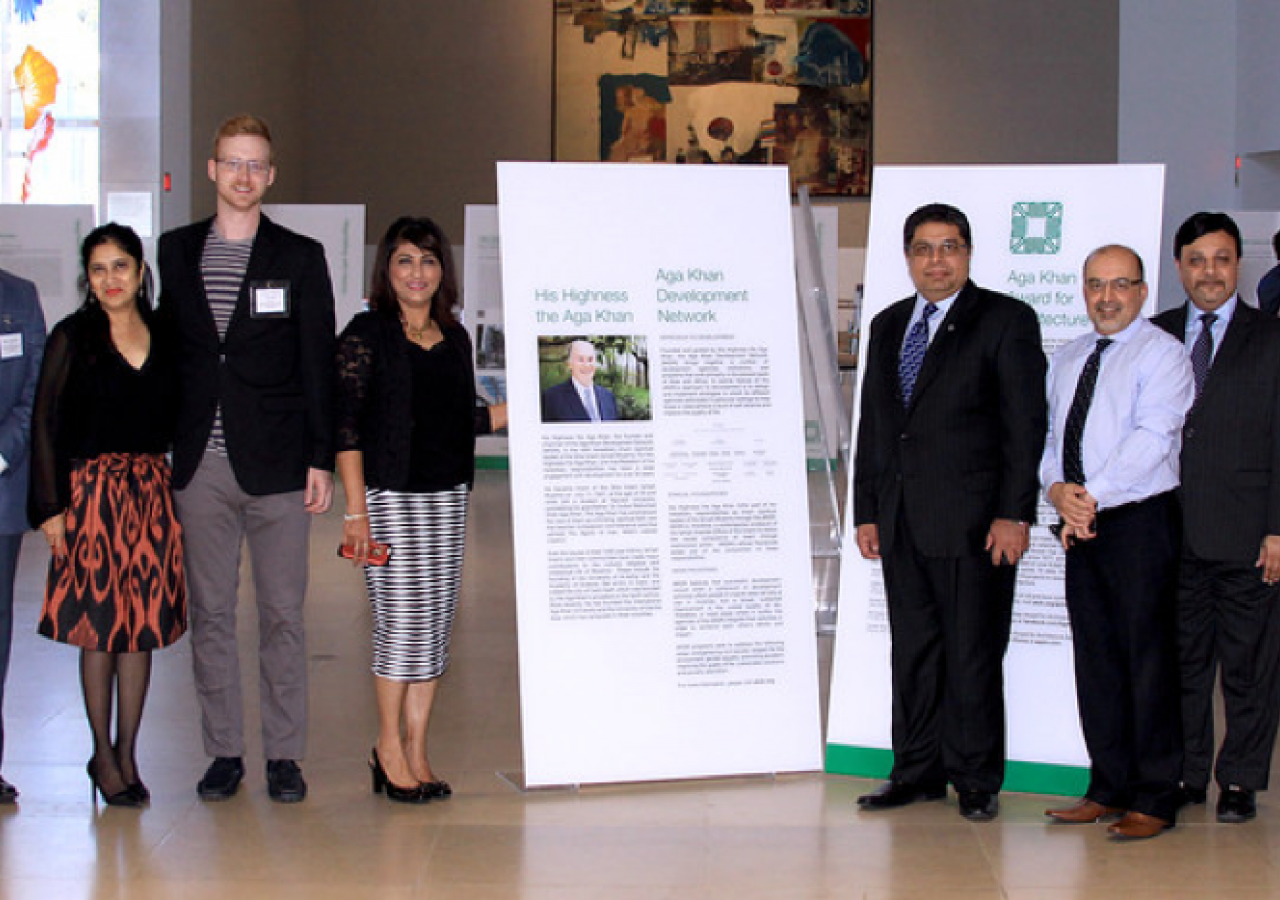The Aga Khan Award for Architecture (AKAA) found a new platform at the Dallas Museum of Art, as 175 people from across the Dallas area learned about the award and its history in October.
The event, which the Dallas Architecture Forum designated as one of its "outstanding lectures" commemorating its 20th anniversary, began with a reception featuring a panel exhibition of all 19 shortlisted projects for the 2016 Aga Khan Award for Architecture.
Eight students from the University of Texas at Arlington's School of Architecture mastered one project each to serve as docents for the event. Brad Bell, the school's interim director, set up a webinar with the students to introduce them to the AKAA and the ways it highlights architecture serving Muslim communities.
The UT Arlington students and STEP teachers from the Ismaili Muslim community explained the projects' architectural elements and their impact.
Later on in the event, Dr. Shiraz Alibhai, Deputy Director of the Aga Khan Trust for Culture, gave a presentation about the establishment of the AKAA. He spoke of the lack of awareness and study of Islamic architecture, and the need to utilize what nature has created to improve quality of life. He also talked about the various books and catalogs that were published to provide scholarly resources for the study of architecture of the Islamic world. The creation of the Aga Khan Program of Islamic Architecture at the Massachusetts Institute of Technology and Harvard University is one example of efforts to develop expertise and practitioners of architecture who are competent to solve environmental issues of tomorrow.
Dr. Alibhai also provided details about the Award process itself. He underscored the role of the multi-disciplinary Steering Committee and described the rigorous and purposeful process of shortlisting and selecting the award recipients. The selection process emphasizes architecture that not only provides for people’s physical, social and economic needs, but also stimulates and responds to their cultural expectations. Through his own experience Dr. Alibhai described the Award as not a point-in-time event, but a journey-through-time phenomenon that builds a community of professionals to enhance the quality of life though the built environment.
“it was a beautiful opportunity allowing for exposure to architecture inspired by the East, and architecture which helps to ameliorate all forms of society," one UT Arlington student said after the event. "I find it very encouraging that organizations like this exist, as they help to make the world smaller and introduce people to cultures they do not know or understand.”











